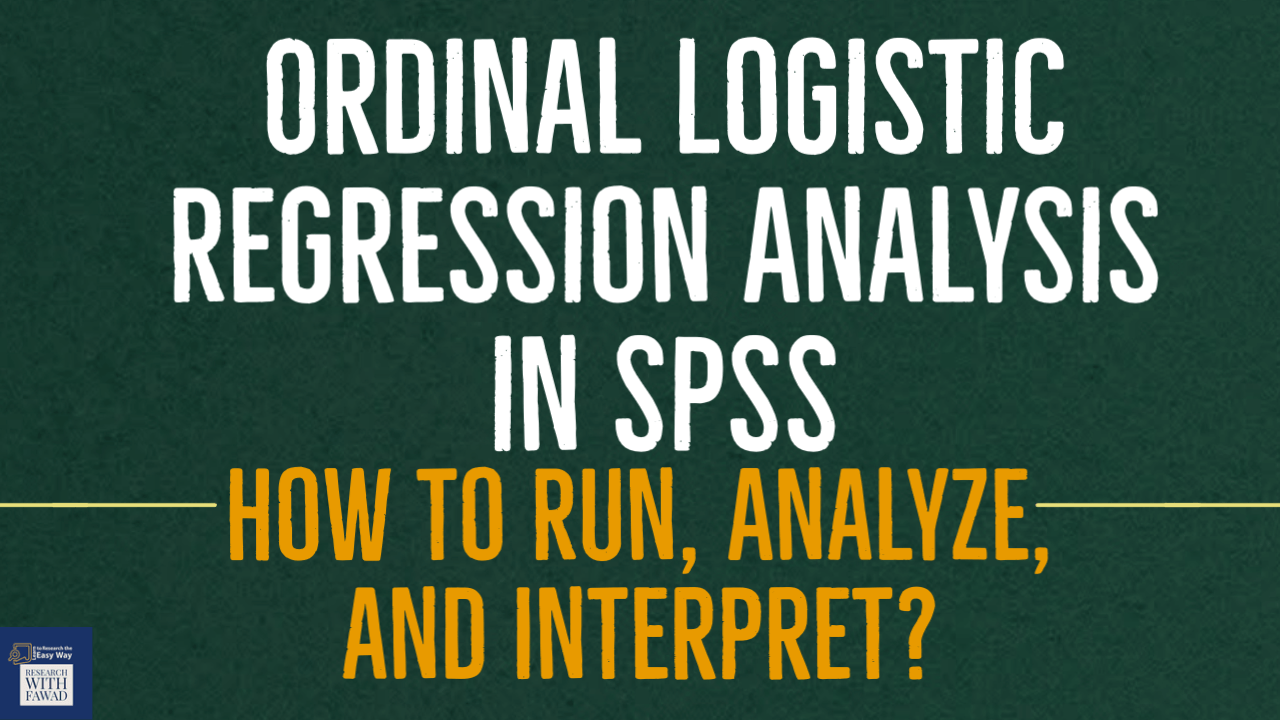What is it All About?
Ordinal Logistic regression analysis is a method to determine the reason-result relationship of independent variable(s) with an Ordinal dependent variable
Ordinal Logistic regression analysis is a method to determine the reason-result relationship of independent variable(s) with an Ordinal dependent variable

The tutorial is a step by step guide on how to perform Ordinal Logistic Regression using SPSS.
Regression technique is used to assess the strength of a relationship between one dependent and independent variable(s). It helps in predicting value of a dependent variable from one or more independent variable.
Linear regression analysis requires the outcome/criterion variable to be measured as a continuous variable. However, there may be situations when the researcher would like to predict an outcome that is Ordinal (for instance Strongly Disagree to Strongly Agree).
In such situation, a scholar can use Ordinal Logistic Regression to assess the impact of one of more predictor variables on the outcomes. Ordinal Logistic regression analysis is a method to determine the reason-result relationship of independent variable(s) with dependent variable
For the purpose of this tutorial, i am considering the following example.
Step 1: In SPSS, Go to Analyze -> Regression -> Ordinal
Step 2: Next, The Ordinal Logistic Regression Dialog Box will Appear. Add Interest in the Dependent Box and Add IVs, Assignments, CCA, and Gender in the Factor(s) List Box and Age in the Covariates list box.
Step 3: Next, Select Options, make sure Logit is selected from Link combo box.
Step 4: Press, Output, and Select Test of Parallel Lines.
The first section of the output shows Case Processing Summary highlighting the cases included in the analysis. In this example we have a total of 144 respondents.
Model Fitting Information, If the Model is significant, this shows that there is a significant improvement in fit as compared to the null model, hence, the model is showing a good fit.
The difference between Intercept Only Model and Final Model should be significant.
Next,
Goodness of Fit statistic indicates a poor fit if the significance value is less than 0.05. Here, the model adequately fits the data (p > 0.05).
A goodness-of-fit test, in general, refers to measuring how well do the observed data correspond to the fitted (assumed) model.
Here, an insignificant value would mean that there are no significant differences in the observed data and fitted (assumed) model.
Model Summary shows the Psuedo R-Square. Psuedo means that it is not technically explaining the variation. But they can be used as approximate variation in the criterion variable. In Ordinal Regression we will use McFadden value of R-Square.
In this case we can say that there has been a 10.4 % improvement in the prediction of outcome based on the predictors in comparison to the null model.
Odds Ratio Represents the Odds of Falling into a Higher/Lower Category on the Dependent Variable with a Unit Change in the Independent Variable.
OR>1 shows an increasing Odds of being in a higher category with a unit increase in the predictor.
OR<1 shows decreasing Odds of being in a higher category with a unit increase in the predictor.